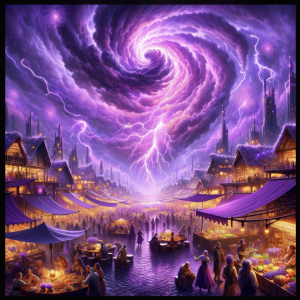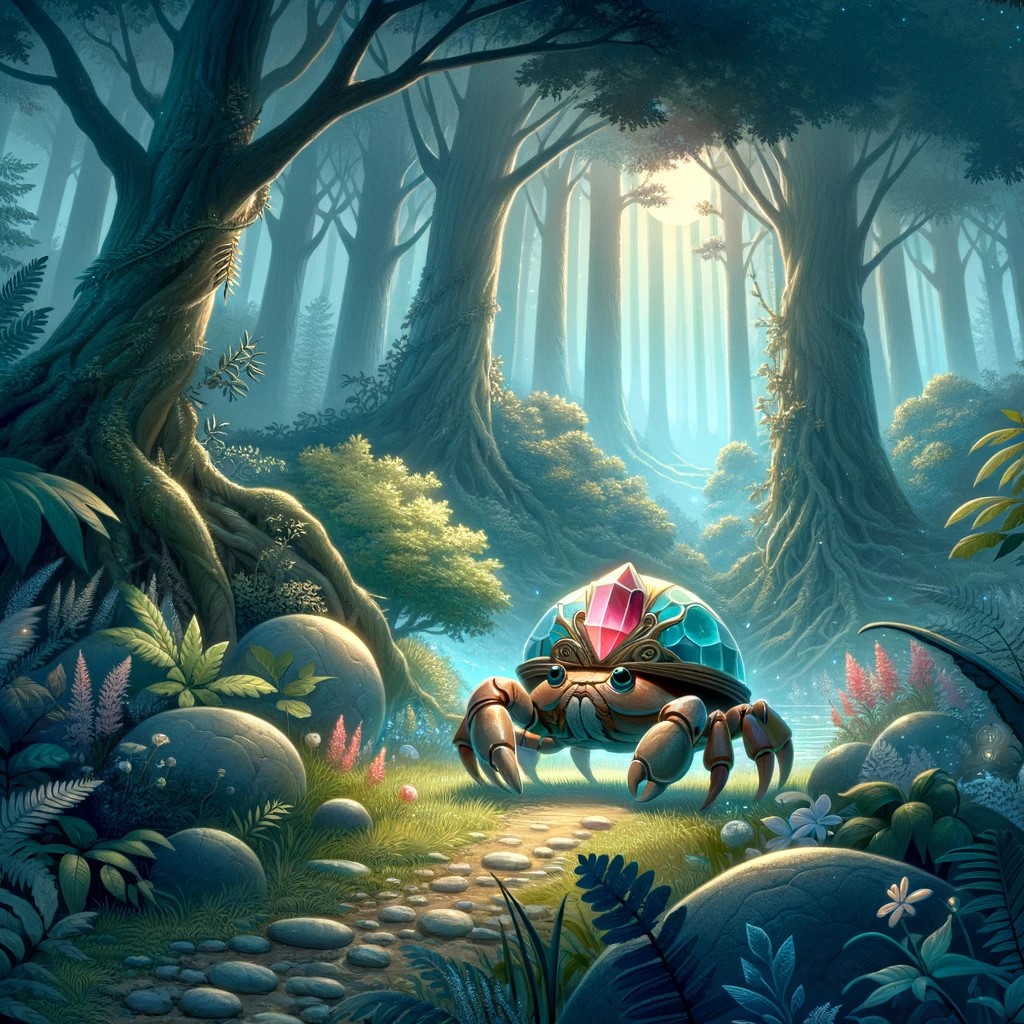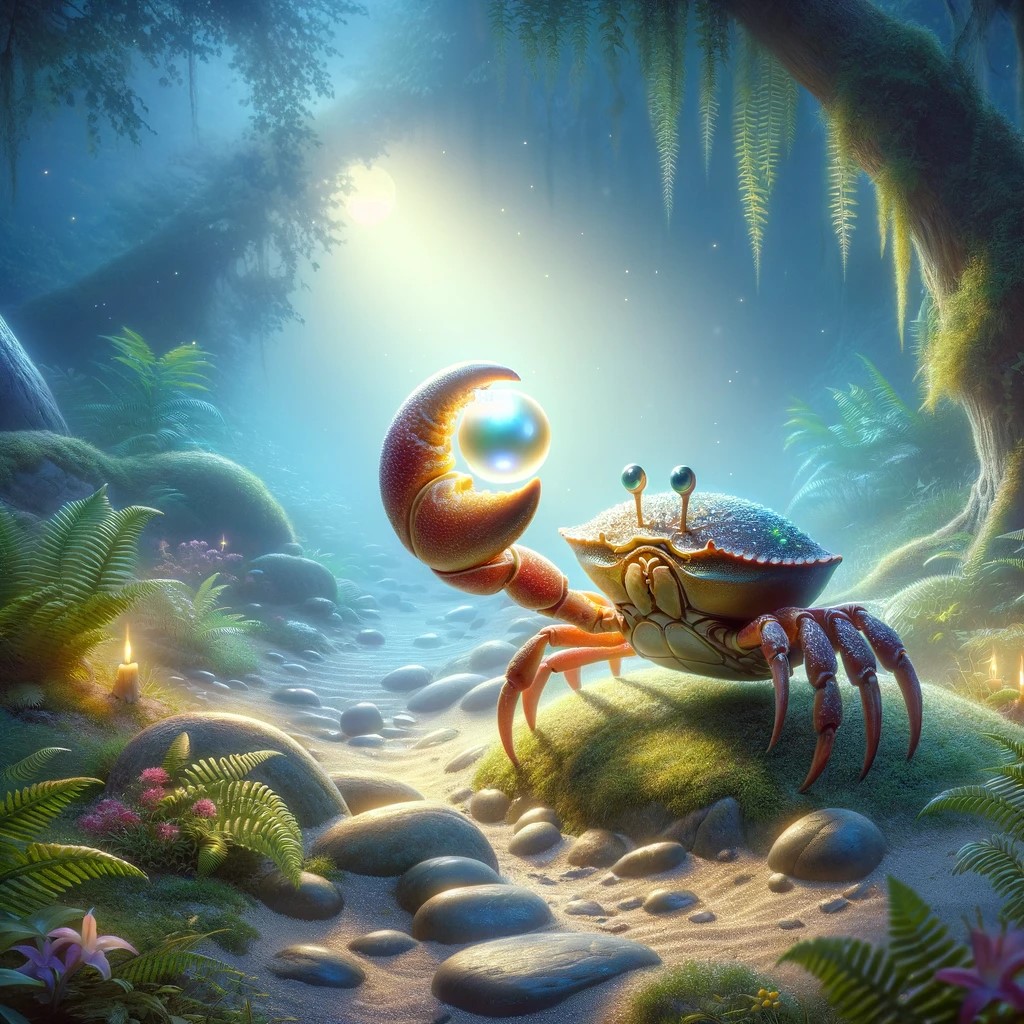The Enchanted Lands of VioStorm
VioStorm emerges as a beacon of futuristic beauty and innovation, where the essence of technology and nature intertwine beneath a canopy of perpetual twilight. This world, set in the 2280s, combines the majestic aesthetics of Victorian architecture with the vibrant neon lights reminiscent of Tokyo, all floating upon vast waters that mirror the ever-changing sky above.
VioStorm is a planet where every horizon bleeds into shades of purple and lavender, a visual symphony of the world’s inherent magic and technological prowess. The “controlled chaos” of its climate, orchestrated by advanced AI, the Synthetica Concordat, not only creates and manages the purple storms but also ensures that each city’s naturalistic element contributes optimally to the world’s energy grid. The purple storms, common to all, are the primary energy source, their lightning a powerful force harnessed to fuel the diverse ecosystems of VioStorm. The Synthetica Concordat also delicately influences the environments and ecosystems, ensuring they complement and support each other in a harmonious balance.
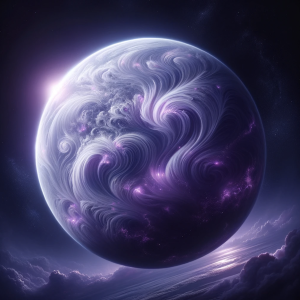
The cities of VioStorm, architectural marvels in themselves, float serenely on the surface of tranquil oceans, connected by networks of bridges and platforms that blend seamlessly with the natural environment. Surrounding these floating metropolises is a dense, lush forest that stretches into the horizon, serving as a natural barrier and a testament to the planet’s vibrant ecosystem. A fiery desert is also found on this planet, its burning heat serving as a protective border from extreme factors. Beyond the forest and the desert, floating purple mountains ascend towards the sky, defying gravity through the power of advanced technology, creating a landscape that blurs the line between the natural and the engineered.
Food, Culture, and Social Life
Cuisine in VioStorm is a vibrant fusion of Italian, American, and Mexican traditions, with lavender pesto sauce revered as a culinary treasure. Restaurants and eateries, many operated by AI chefs with a flair for innovation, offer dishes that tantalize the senses and nourish the soul.
Cultural life in Viostorm is a rich tapestry of contrasts. From Victorian waltzes to post-punk concerts coexisting, to jazz and alternative influences, that all draw crowds into grand ballrooms and underground clubs alike. Dance, influenced by Latin American vibrancy, is a universal language, celebrated in public squares and holographically projected stages.
The Four Enclaves of VioStorm
- Aquavioleta: The oceanic enclave, where water meets the sky in a dance of shimmering violets.Floating majestically on the ocean’s surface, this city harnesses the power of water. Its inhabitants live in harmony with the sea, utilizing the endless energy of the waves and the storms above to power their floating utopia. Its cuisine is rich in seafood, with dishes like Lavender Lobster Risotto embodying the fusion of sea bounty and local flora. Aquavioleta’s dances blend fluid movements reminiscent of the waves with sharp, post-punk energy.
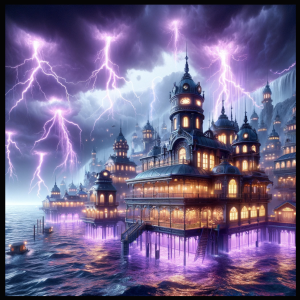
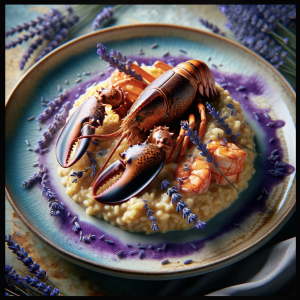
- Sylvanura: Encased in a forest of deep purples and soft lavenders, this land celebrates the earth. Encircled by an ancient forest, this section thrives on the essence of earth. The dense canopy and rich soil not only offer bountiful resources but also inspire architectural designs that intertwine with the trees, drawing energy from the forest’s life force. Its signature dish, Wild Mushroom and Purple Truffle Pasta, mirrors the forest’s bounty. The dances here are grounded and vibrant, mixing traditional Latin steps with a rebellious spirit of classical music.

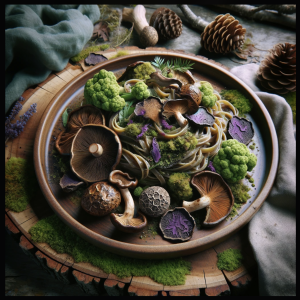
- Venturion: The wind enclave, nestled within levitating purple mountains. Nestled within levitating purple mountains, this city embodies the element of wind. Utilizing the high altitudes and the power of the storms that envelop them, its people have mastered the art of wind energy, living in homes carved into the heart of floating stones.Its people savor Aerial Berry Soufflé, a dish as light as the air they dominate. The dances of Venturion soar and twirl, capturing the essence of the wind with a jazz flair.
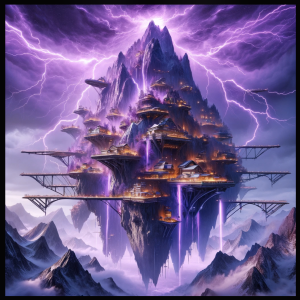
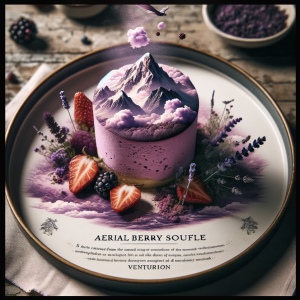
- Ignilume: Amidst a desert of purple flames, the fire city glows with an ethereal light. Its people have adapted to harness the heat and the rare energy bursts from the ground, living in structures designed to withstand and utilize the intense power of their fiery environment. Here, Spicy Flame-Roasted Peppers with a secret lavender pesto are a culinary staple. Ignilume’s dances are fiery and passionate, a fusion of Latin heat and punk intensity.
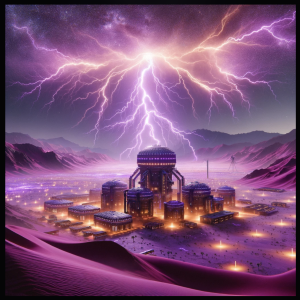
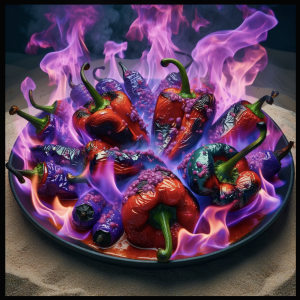
Ecosystem Interconnection
The ecosystems of VioStorm’s enclaves are interwoven, with the AI’s “controlled chaos” ensuring that the unique climate of each area contributes to the collective health of the planet. This interconnection allows for the exchange of resources and energy, creating a world where diversity strengthens unity.
Economy and Cultural Wealth
Beyond harnessing storm energy, VioStorm thrives on a vibrant economy rooted in gastronomy and culture. Secret recipes of lavender pesto, infused with local, elemental ingredients, are highly sought after, turning culinary expertise into a significant economic asset. Artisans, chefs, and dancers contribute to a bustling market where cultural expression is both a tradition and a commodity.
Religion and Education: The Elemental Creed
Religion in VioStorm is a celebration of the elemental forces, with each enclave venerating their primary element through rituals and festivals that honor the sacred crystals associated with water, earth, wind, and fire. Education across VioStorm emphasizes a deep understanding of these elements, fostering a society that respects and leverages the diversity of its surroundings. Its educational system also emphasizes the importance of understanding all elements, fostering a sense of unity and respect for the diversity within VioStorm.
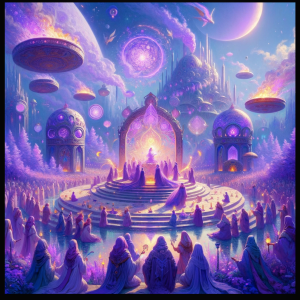
Technological Advancements
VioStorm is at the forefront of technological innovation, with storm energy at the core of its advancements. The economy of VioStorm benefits from AI’s precision in managing and optimizing the use of storm energy. Technological advancements across the cities reflect a deep integration of AI in predicting weather patterns, controlling storm intensity, and harnessing energy, ensuring sustainability and prosperity. Force fields protect the city from environmental extremes, while flying cars and horse-drawn carriages offer transportation options that blend nostalgia with futurism. AI systems are integral in preserving the delicate balance of ecosystems, optimizing energy capture from the purple storms, and ensuring the continued prosperity of its inhabitants.
The Vast Landscapes and AI Harmony
VioStorm’s landscapes are a testament to the innovative use of AI in managing natural forces. From the floating mountains of Venturion to the fiery dunes of Ignilume, each powered by the mesmerizing purple storms that are the lifeblood of the world. The creative use of AI in managing natural forces and fostering creativity, alongside the cultural richness that blends traditional and futuristic elements, sets VioStorm apart as a world where technology and nature exist in perfect harmony.
The world of VioStorm, with its enchanted enclaves, rich cultural tapestry, and the symbiotic relationship between technology and nature, stands as a beacon of what can be achieved when the forces of the universe are harnessed in harmony with human and AI ingenuity.


